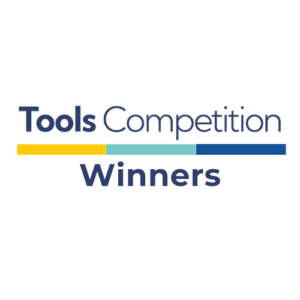
As you tackle the challenge of developing an important new tool that addresses a critical learning need, you might be wondering: How can you effectively engage learners, families, and teachers to ensure your product is successfully designed with the user in mind? How can you ensure that the tool you’re developing is truly what your user needs—not just what they think they might want?
To answer questions such as these, we hosted an AMA (Ask Me Anything) with Tools Competition winners UPchieve and ASSISTments. View the full event recording here.
ASSISTments strives to enhance educational impact with data-driven formative assessment solutions for teachers, students, tutors, and instructional leaders, while UPchieve provides free, on-demand online tutoring and college counseling for low-income high school students by connecting them with volunteer tutors. Together, and with the support of the Tools Competition, they’ve partnered to create an innovative solution incorporating both of their products: offering immediate access to UPchieve tutors for students who get stuck while completing their assignments in ASSISTments.
The AMA featured ASSISTments’ Cristina Heffernan (Co-Founder & Executive Director) and Tom Bolton (Vice President of Product), alongside UPchieve’s Bailey Lowenthal (Programs Director). What did they have to say? Find some of our top takeaways below:
- More important than the “what” is the “why”. You can understand what the user is looking for in a product or service, but when you listen to why, an entire user experience is uncovered. Learning about what’s valuable to users and what their goals are allows you to develop a tool with users truly at the center—empowering them to achieve their objectives.
- When you’re engaging with users, practice deep and active listening. Try to avoid rigid interview guides that don’t allow a conversation or story to unfold more organically. Through this process, you can reveal much more than you might with a list of fixed questions. By approaching a user conversation with an open and curious mind, you can uncover more of their unique story and better understand their experience—allowing you to learn even more about their challenges, and how your tool might address them.
- Don’t be afraid to jump right in and kick off the user feedback process. While listening is extremely important, it begins with outreach and asking questions. What problem can your product really solve for users? UPchieve builds opportunities for user feedback and active connection through interviews directly following students’ and volunteers’ first session—offering them an open invitation to share what’s top of mind following their initial experience.
- When possible, go as deeply as you can. Asking users for their time to provide feedback can sometimes prove challenging—you might be working with busy educators, administrators, or students themselves. Utilizing team members or enlisting an advisory board for additional expertise and first-hand experience can offer rich and critical information about your target audience. Identifying experts whose lived experiences are that of your target user can also allow you to more deeply understand their situation. ASSISTments’ Co-Founder spent so much time with local school partners attempting to understand their needs, testing the first iterations of their product for feedback and implementing the first versions with students that they wound up being featured in the school yearbook… twice!
- In written feedback, create space for open-ended responses. It’s easy enough for users to complete fixed response questions, but where do you really gain the most valuable insights? Though qualitative coding can be a tedious process, asking open-ended questions can lead to rich and meaningful data—and can be well worth the effort and time involved.
- Think of the challenge your product is designed to solve for your users… and then message it! Reaching new users for feedback can be challenging when you’re just getting started. To identify and reach users when your tool is still new, lead with the problem you’ve dedicated to solving for them—this can often be the best form of advertisement.
Additionally, panelists offered insights on their challenges reaching users when they were getting started, what successful user engagement looks like to them, tips for those just getting started on user outreach, and much more.
View the full event recording here.



